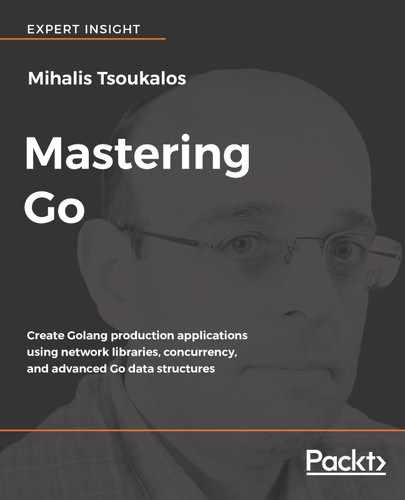Book Description
Exploring the major features and packages of Go, along with its types and data-structures, enabling the reader to write threadsafe, concurrent cloud, and network applications
About This Book- Not your typical introduction to the Golang programming language
- Exploring Golang cradle to grave, completes the developer's Golang education
- A thorough exploration into the core libraries and Golang features, that usually are taken for granted
- In depth explanation, detailing the rationale behind composite data types, Golang concurrency, and the Golang networking library
This book is for Golang programmers. You should have previously read an introductory book on Go, or to have worked through the Tour of Go or an equivalent online course. This book will definitely help to remember the basic concepts of concurrency, but network programming will be explained. A certain amount of previous coding and production experience would be helpful.
What You Will Learn- Understand the design choices of Golang syntax
- Know enough Go internals to be able to optimize Golang code
- Appreciate concurrency models available in Golang
- Understand the interplay of systems and networking code
- Write server-level code that plays well in all environments
- Understand the context and appropriate use of Go data types and data structures
The Go programming language, often referred to as Golang (albeit wrongly), is really making strides, with some masterclass developments, architected by the greatest programming minds. Tobias Lutke, CEO of Shopify, recently quoted as saying “Go will be the server language of the future”, powerful words, with much ambition. Go programmers are in high demand, but more controversially, Go takes the stage, where C and Unix programmers previously led the way.
The growth of the Go language has seen it become the means by which systems, networking, web, and cloud applications are implemented. Comfortable with syntax, you'll benefit by mastering the use of the libraries and utilise its features, speed, and efficiency, for which the Go ecology is justly famous.
You already know a little Go syntax and you've written some small projects, most Go programmers face the difficulty of having to integrate their Golang skills with production code. Typical introductions to Go programming, often stop short of this transition, the author continue on, showing you just how to tackle this.
Offering a compendium of Go, the book begins with an account of how Go has been implemented, also, the reader will benefit from a dedicated chapter, an in-depth account of concurrency, systems and network programming, imperative for modern-day native cloud development.
Style and approachThe approach is a practical one, very much hands-on, and a bit more demanding and in-depth than your average programming language introduction. The aim is to enable a Golang programmer to write and put in production a complete Golang application, regardless of the environment, which will be achieved by a masterclass of well- formed exercises.
Downloading the example code for this book You can download the example code files for all Packt books you have purchased from your account at http://www.PacktPub.com. If you purchased this book elsewhere, you can visit http://www.PacktPub.com/support and register to have the files e-mailed directly to you.
